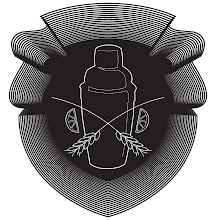The basic to building a batch of bitters is putting together three basic components - a bittering agent, a spice tincture, and a flavouring tincture. Generally, the components to these agents can be quite difficult to find, but I was stoked to come across a bevy of amazing dried herbs while working in Portland. On Hawthorne street, there is a quaint little joint called The Herbe Shoppe. With very helpful staff, I was able to procure wormwood, licorice root, quassia chips, gentian root, calamus, and cinnamon chip. I purchased about an ounce and a half of each, which appears to take me a long way. It all added up to about $15 for the lot, which made this surprising find even better.
To keep it simple, I wanted to follow the Boker's Bitter Recipe, but the ingredients are impossible to find (Catechu...no where). But it did call for the gentian root, calamus, quassia, and cardamom, so I figured I could go from there. I wanted to go with some orange flavouring, but figured, as it was my first go at it, to keep it to just the bitter blend.
I broke it down into 3 small batches that I would blend together after two weeks of maceration.
First, the bittering blend:
 |
| wormwood |
 |
| gentian root |
Gentian is the 4th ingredient you'll find in Angostura bitters, and is a commonly used digestive aid. For this recipe, I used 1/4 teaspoon
 |
| quassia chips |
Born in Brazil, quassia amara is the most bitter substance in nature, so, naturally, it belongs in a batch of bitters! For this recipe, I went with 1 teaspoon.
Secondly, the Spice Tincture
 |
| licorice root |
Licorice root, originating in Europe and Asia, is not related to anise, star anise, or fennel, but is a strong licorice component in its own right, and used broadly as a solid flavouring. For this recipe, I used 1/2 a teaspoon
 |
| coriander seed |
Coriander is commonly used in cooking, and are is a key component in middle eastern and Mediterranean cuisine. You can find the seeds in Garam Masala and Indian curry. Here, I used 1 teaspoon.
 |
| fennel seeds |
Fennel is a highly aromatic and flavourful herb. Containing anethole, it is a positive medicinal aid for eyes and the intestinal tract (something in common there?). I used 1/2 a teaspoon.
And finally, The Cinnamon Clove Tincture
 |
| Cloves |
 |
| Cinnamon Chips |
Cinnamon has been known from remote antiquity. It was imported to Egypt as early as 2000 BCE. Its history is long, and probably warranting its own story. It was regarded fit for a monarch and even a god. For me, 2 teaspoons of these chips were the perfect flavouring addition for my first batch of bitters.
Each of these combinations was put into a mason jar with overproof vodka. I opted for the vodka as I wanted the flavours to speak for themselves and not be impacted by, say, an overproof rum.
Of course, everyone needs a Bitter Making Helper Hobbit!
 |
| everyone needs a helper! |
Finally, after two weeks, and shaking each jar once each day, the bitters were ready to be combined and strained. Thankfully, my Krups Moka Brew coffee maker fit the job.
 |
| straining through my Krups Moka Brew coffee pot |
Then, they get bottled! I thought the bitters would be darker, but I am quite happy with how they turned out. They certainly are bitter and so far are a fine additive to an Old Fashioned or a Manhattan!
So, that is my first batch. I am hoping to get another batch up and running. I hope to do an Orange bitter and a rhubarb bitter. Cheers!
 |
| Bottled! A bit lighter in colour than I had imagined |


